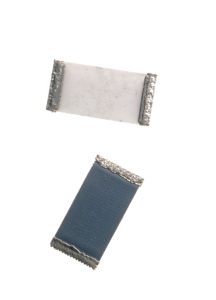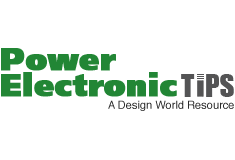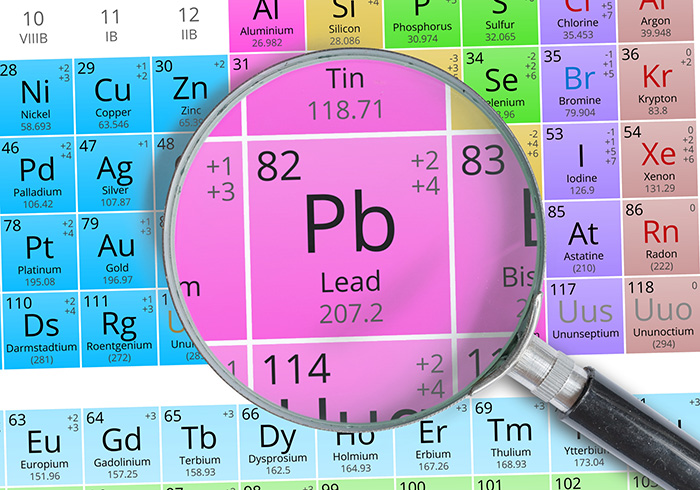By Stephen Oxley, Senior Engineer Applications and Marketing, TT Electronics
Lead has long been recognized as a serious environmental hazard. It has a detrimental effect on the workings of the human central nervous system, and this is particularly acute when children are exposed to it. Based on the findings of scientific research conducted during the 1960s, the presence of lead in gasoline, paints and other household products was phased out throughout the 1970s/1980s, and further legislative measures gradually saw it eradicated from most aspects of our everyday lives.
The Restriction of Hazardous Substances Directive 2002/95/EC (RoHS) legislated to remove metallic lead from electronic components, along with other harmful constituents such as mercury or cadmium, and replace them with alternatives that did not have such a severe ecological impact. The legislation was brought into effect in 2006, though most suppliers had already conformed to it a couple of years prior to its enforcement. It should be noted though that there are certain exemptions to the RoHS directive – where, at the time of its implementation, no viable substitute could be found.
Among the areas where an exemption would prove to be warranted was in thick-film resistors, and to this day the incorporation of lead oxide compounds into their glass elements is still permitted. Though much more stable, and thus posing less of an immediate threat, there is still a risk of these toxic heavy metal compounds entering the surrounding environment over time, leaching into groundwater from landfill sites. Due to growing concerns about the huge quantities of e-waste now being amassed, there is renewed pressure to look at narrowing the scope of the existing exemptions and make regulatory guidelines more stringent.
It is important for OEMs to be aware that the current RoHS exemptions in place are subject to periodical review. Hence, there will be the potential risk of components that have already been specified into electronics designs to no longer be within the exemption area. Clearly, this could have serious and extremely costly implications for an OEM that fails to be adequately prepared, and this is now leading to a need for pre-emptive action to be taken.

The next review of the relevant RoHS exemption – 7(c)-I ‘Electrical & Electronic Components Containing Lead in a Glass or Ceramic Material’ – is scheduled for 2021, and during this review, the inclusion of lead oxides in thick-film resistors may be placed under considerable scrutiny. OEMs need access to components with which they can future-proof their system designs in case RoHS exemption changes are made. Consequently, they will not have to worry about allocating additional time and engineering resources to make amendments further down the line – when there is an imminent deadline.
Removing the lead oxides from glass in thick-film materials is not that simple, and until now attempts to do so have had associated performance penalties. Commodity resistors where lead has been removed from the glass are already available and have been acceptable in certain less-demanding cases. However, these have not come close to attaining the benchmarks necessary to address higher-end applications.
Drawing on the work that has been done by TT Electronics and its supply partners during a period of 18 months, a new generation of completely green thick-film resistors is now being introduced. Through these green thick-film resistors, long-term RoHS compliance can be assured and reliance on exemptions eliminated. Furthermore, the inconvenience of OEMs having to undertake subsequent system redesign work is mitigated.
Covering resistance values from 25kΩ to 100MΩ, the Green High-Voltage Chip (GHVC) resistors are supplied in standard EIA 1206, 2010 and 2512 package formats, and have respective power ratings of 0.3W, 0.5W and 1.0W. A working temperature range spanning from -55°C to 125°C is supported, with each of these robust components offering up to 3000V Limiting Element Voltage (LEV) and being resilient enough to withstand up to 7kV peak voltage for a 1.2/50µs surge. The ±100ppm/°C temperature coefficient and -1.5ppm/V voltage coefficient mean that the precision of their operational parameters is always upheld. Moreover, these resistors feature anti-sulfur terminations that have passed ASTM-B-809 tests – so they can contend with the harsh sulfurous environments that may result from use in mining and chemical processing tasks.

These compact resistors are extremely well optimized for deployment in modern, densely packed electronic circuitry – enabling elevated voltage levels to be sustained while avoiding the need to utilize multiple components, thereby saving board real estate and keeping the overall bill of materials in check. They are targeted at hybrid electric vehicles (HEVs), industrial automation, clinical medical and home healthcare applications, where they will serve in either high-voltage sensing or circuit protection functions. Though important in all forms of electronic design, the future-proofing aspect will be of particular value in a medical context, as using GHVC (green high-voltage chip) components will mean that not only redesign, but also long drawn-out requalification procedures can be avoided.
By using more advanced materials and implementing a new fabrication process, but not having to make any significant financial outlay on the upgrading of equipment, the migration to a fully lead-free strategy has not represented a major increase in production expenses. Therefore, the price points are effectively the same as with products containing lead oxides. Initially, the expectation is, on average, for GHVC pricing to be around 20% higher – though this will drop post-launch as volume demands increase and economies of scale start to kick in.
In what is already an unpredictable business landscape, OEMs need to do everything they can to safeguard the investment made in their system designs and minimize the financial dangers of having to make alterations or carry out time-consuming re-spins. The sourcing of components that pre-empt further restrictions to RoHS, and any redefining of the area that is exempt, can play a pivotal part in achieving this goal. Though the RoHS exemption for lead oxide in glass has been in existence for several years without change, it would be unwise for OEMs to believe that it is completely immutable — and there is a good reason for greater restrictions to be anticipated. Technological advances in the materials employed in passive components have now reached a stage where totally lead-free supply is starting to be possible without performance compromises needing to be made, or unit cost increases being witnessed.



Leave a Reply